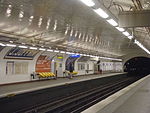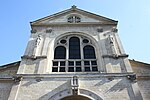La Fémis
La Fémis (French: École Nationale Supérieure des Métiers de l'Image et du Son, formerly known as the Institut des hautes études cinématographiques, IDHEC) is a French grande école and the film and television school of PSL Research University. FEMIS (pronounced [femis]) is an acronym for Fondation Européenne pour les Métiers de l'Image et du Son. Based in Paris, it offers courses balanced between artistic research, professional development and technical training. In 2012, The Hollywood Reporter rated La fémis no.6 in its best international film school rankings (it included U.S.-based film schools) and no.3 in its 2014 best international film school rankings (it excluded U.S.-based film schools). Its alumni have won three of the world's most prestigious film prizes - Cannes Film Festival's Golden Palm, Venice Film Festival's Golden Lion and Berlin International Film Festival's Golden Bear - 11 times, making it the most rewarded film school in the world, preceding the Beijing Film Academy and the Tisch School of the Arts of New York City, in winning those three prizes.
Excerpt from the Wikipedia article La Fémis (License: CC BY-SA 3.0, Authors).La Fémis
Rue Francœur, Paris Quartier de Clignancourt (Paris)
Geographical coordinates (GPS) Address Website External links Nearby Places Show on map
Geographical coordinates (GPS)
| Latitude | Longitude |
|---|---|
| N 48.8904 ° | E 2.3426 ° |
Address
La Fémis - École nationale supérieure des métiers de l'image et du son
Rue Francœur
75018 Paris, Quartier de Clignancourt (Paris)
Ile-de-France, France
Open on Google Maps










